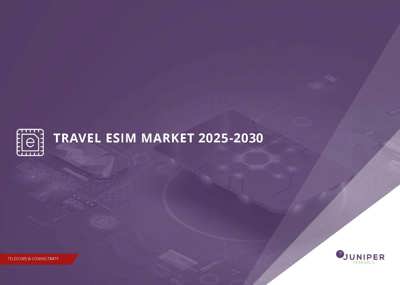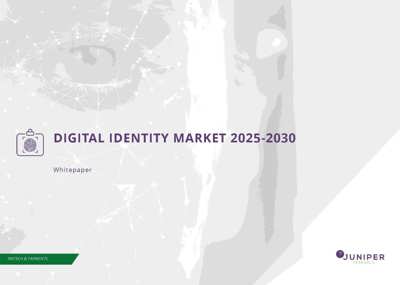Biometrics and the Fight Against Mobile Payment Fraud
In 2020, our mobile phones, and the transactions they can handle, took on new importance. The COVID-19 pandemic meant that during large parts of the year, many of us were required to stay at home and shop from the comfort of our own armchair. Mobile payments have become a vital channel for both eCommerce and POS payments.
Either through the Internet or in wallet mode, via NFC, the versatility of the mobile device has shown it can be used in a range of both remote and in-person transactions. Smartphones have now become a common platform for remote eCommerce.
At the same time, regulators are ensuring that the need to secure personal and payment data is moving beyond being a mere cost of business into a necessary part of business operations. Mobile transactions are an ecosystem in their own right. This ecosystem has many moving parts, each of which are potentially open to exploitation and fraud. For this reason, security of transactions is both a key driver and a constraint in the use of mobile devices for payments. Increasingly, the identification and verification of a user during a transaction, is becoming the pivot upon which transaction success turns.
Indeed, the changing dynamics of the ecosystem and increasing connectivity across a myriad of platforms has increased the vulnerabilities and opened up opportunities for fraudulent activities. The number of mobile payment fraud occurrences has increased as well. Every possible entry point from social media to rogue apps to synthetic identity is used to circumvent security measures. Thanks to the increased transaction levels on smartphones, these devices will be the focus of attention for both fraudsters and those who seek to combat them.
Some of the most recent mobile fraud trends include social media – where the platforms are used as vectors for phishing posts, recruitment of fraudsters and money mules, and synthetic identity – the creation of rogue or unauthorised apps, and mobile data exposure. Though there has been a focus on using tokenisation as a security measure, this will only realistically work during the provisioning stage: with tokens frequently being generated and used, fraudsters will look for ways to hack the system. Fraudsters are highly innovative, so tokenisation will be only one area that will come into sharp focus, as payments increasingly move online.
Indeed, the future of verification and authorisation fraud, seem to be tied to another important fraud trend: synthetic identities. reported. Conversely, synthetic identity payment fraud takes place when attackers create a new identity to commit fraud, including identity fabrication, identity manipulation and identity compilation.
Biometrics have been used to counter this, as they add far more security in comparison to passwords. However, they raise the other concern that, once biometric data is breached, it cannot be replaced for use again. This can be addressed through strong anti-spoofing technologies that are separate from the stored biometric data itself.
This is typically combatted through the use of either tokenisation or encryption of stored data, to ensure that the data is unusable when a fraudster procures it. White-box cryptography can be used here, most commonly in HCE (Host Card Emulators) and TEE implementations, where hardware (such as an HSM) cannot be used as part of the encryption process. Another way in which biometric data is secured is through it never leaving the device; it is stored on a SE or TEE, and then used to validate tokens which are sent to the payment provider.
What is likely is that there is not just one single method that can counter this type of fraud. Indeed, a combination of behavioural biometric, machine learning, risk-based transaction assessment will present an ecosystem approach to mitigating against sophisticated techniques that take advantage of biometric authorisation, eg stolen biometrics or deepfake technology.
Latest research, whitepapers & press releases
-
 ReportNovember 2025Telecoms & Connectivity
ReportNovember 2025Telecoms & ConnectivityeSIMs & iSIMs Market: 2025-2030
Juniper Research’s eSIMs and iSIMs research suite offers insightful analysis of a market set to experience significant growth in the next five years. The research suite provides mobile network operators (MNOs), original equipment manufacturers (OEMs), and eSIM management and platforms vendors with intelligence on how to capitalise on the market growth, and guidance on how eSIM-only devices and sensors, SGP.42, in-factory provisioning, and iSIMs will change the competitive landscape.
VIEW -
 ReportNovember 2025Fintech & Payments
ReportNovember 2025Fintech & PaymentsModern Card Issuing Platforms Market: 2025-2030
Our Modern Card Issuing Platforms Market research suite provides a detailed and insightful analysis of this evolving market; enabling stakeholders from banks, financial institutions, fintech companies, and technology vendors to understand future growth, key trends, and the competitive environment.
VIEW -
 ReportNovember 2025Fintech & Payments
ReportNovember 2025Fintech & PaymentsDigital Wallets Market: 2025-2030
Our digital wallets research suite provides detailed analysis of this rapidly changing market; allowing digital wallet providers to gain an understanding of key payment trends and challenges, potential growth opportunities, and the competitive environment.
VIEW -
 ReportOctober 2025Fintech & Payments
ReportOctober 2025Fintech & PaymentsDigital Identity Market: 2025-2030
Juniper Research’s Digital Identity research suite provides a comprehensive and insightful analysis of this market; enabling stakeholders, including digital identity platform providers, digital identity verification providers, government agencies, banks, and many others, to understand future growth, key trends, and the competitive environment.
VIEW -
 ReportOctober 2025Telecoms & Connectivity
ReportOctober 2025Telecoms & ConnectivityTravel eSIM Market: 2025-2030
Our comprehensive Travel eSIMs research suite comprises detailed assessment of a market undergoing rapid growth. It provides insight into how travel eSIM providers can differentiate their services to maximise success in the market over the next two years.
VIEW -
 ReportOctober 2025IoT & Emerging Technology
ReportOctober 2025IoT & Emerging TechnologyDirect to Satellite Market: 2025-2030
Juniper Research’s Direct to Satellite research suite provides satellite providers, investors, and partners, such as Mobile Network Operators, with an extensive analysis and insights into the direct to satellite market.
VIEW
-
 WhitepaperNovember 2025Fintech & Payments
WhitepaperNovember 2025Fintech & PaymentsUnlocking the Next Stage of Growth for Modern Card Issuing Platforms
This free whitepaper analyses key trends shaping the modern card issuing space, and the ways in which modern card issuing platforms can capture growth.
VIEW -
 WhitepaperNovember 2025Fintech & Payments
WhitepaperNovember 2025Fintech & PaymentsTop 10 Fintech & Payments Trends 2026
Fintech is evolving fast. From stablecoins to agentic AI, our annual guide reveals the shifts redefining payments, digital identity, and the future of money in 2026. Download your copy today.
VIEW -
 WhitepaperNovember 2025Fintech & Payments
WhitepaperNovember 2025Fintech & PaymentsDigital Wallets: Empowering Financial Inclusivity
Our complimentary whitepaper, Digital Wallets: Empowering Financial Inclusivity, examines the state of the digital wallets market; considering the impact of digital wallets on different geographies, how they are shaping the modern payments landscape through lower transaction fees and promoting financial inclusivity for underbanked populations, and how they are competing with established payment methods.
VIEW -
 WhitepaperNovember 2025Telecoms & Connectivity
WhitepaperNovember 2025Telecoms & ConnectivityTop 10 Telecoms & Connectivity Trends 2026
The next phase of telecoms isn’t coming — it’s already here. From AI agents to new network models, our guide shows what’s changing right now and how it’s transforming the business of connectivity. Download your copy today.
VIEW -
 WhitepaperOctober 2025Fintech & Payments
WhitepaperOctober 2025Fintech & PaymentsHow Digital Identity is Going Mainstream
Our complimentary whitepaper, How Digital Identity is Going Mainstream, assesses the trends that are moving digital identity to be increasingly popular, and challenges to digital identity growth.
VIEW -
 WhitepaperOctober 2025IoT & Emerging Technology
WhitepaperOctober 2025IoT & Emerging TechnologyBeam Me Up: The Direct to Satellite Revolution
Our complimentary whitepaper, Beam Me Up: The Direct to Satellite Revolution, evaluates the future key services that satellite providers must offer in the direct to satellite market.
VIEW
-
Fintech & Payments
Cross-border A2A Transactions to Surpass 11 Billion in 2026 Globally, Thanks to Enhanced Interoperability
November 2025 -
Fintech & Payments
Modern Card Issuing Platforms Market to Surpass $4.2 Billion by 2030, as Juniper Research Reveals Global Leaders Driving Fintech Innovation
November 2025 -
Fintech & Payments
Juniper Research Unveils the Top 10 Trends Set to Shape Fintech & Payments in 2026
November 2025 -
Fintech & Payments
Digital Wallet Users to Surpass Three Quarters of Global Population by 2030
November 2025 -
Telecoms & Connectivity
Juniper Research Reveals 2026’s Defining Telecoms Trends
November 2025 -
Telecoms & Connectivity
Consumer Losses to Mobile Messaging Fraud to Fall 10% Globally in 2026
November 2025




















